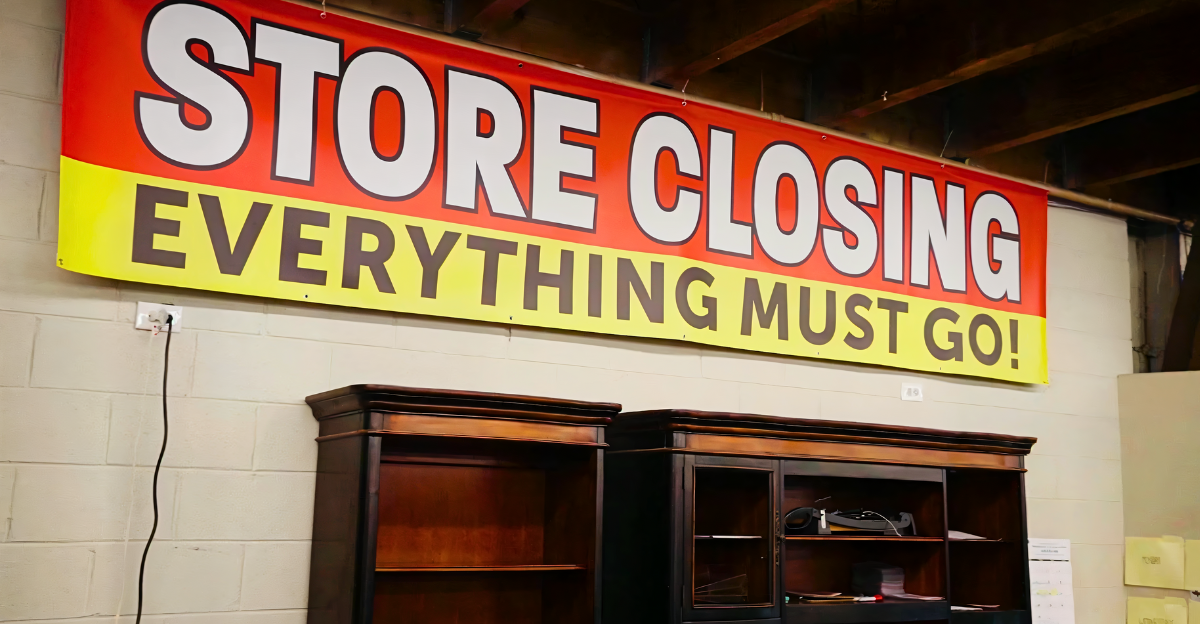
The last big tariff war triggered by a U.S. president was in the early 1930s with the Smoot-Hawley Tariff Act, which sharply raised import tariffs on thousands of products.
Intended to protect American industries and farmers during economic hard times, it effectively resulted in retaliatory tariffs worldwide, sending international trade plummeting and deepening the Great Depression.
Nearly a century later, tariff wars are once again rattling markets, fueling fears of the same economic carnage. So let’s examine the past impact of tariff wars, the causes of the Great Depression, and what current trade tensions might mean for the global economy today.
Understanding the Great Depression
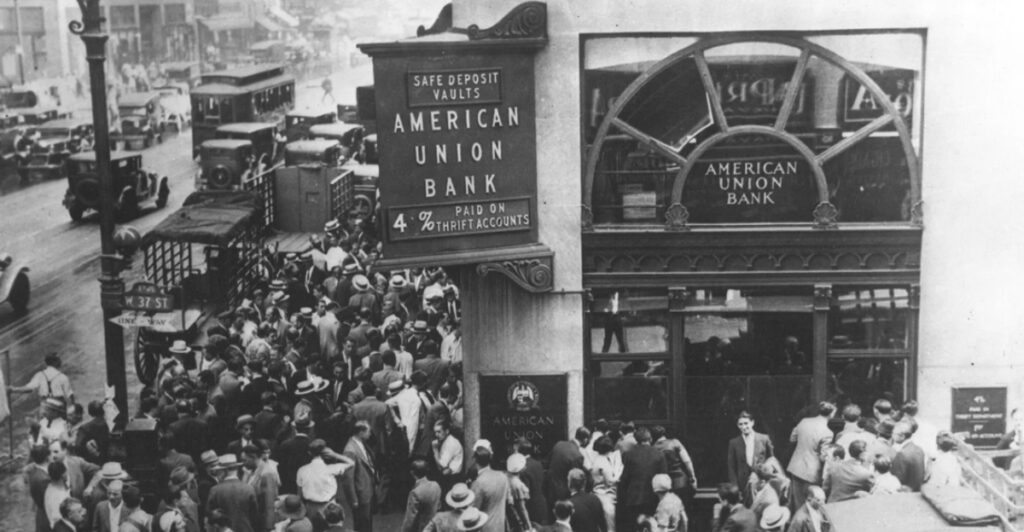
The Great Depression, lasting from 1929 to 1939, was the most severe and prolonged economic downturn in recent history. Triggered by a collapse in the stock market, it led to mass unemployment, poverty, and a collapse of industrial production and international trade.
Additional contributing causes included banking panics, the Federal Reserve’s contractionary policies, the gold standard, and protectionist tariffs. The crisis deepened worldwide, ruining economies and triggering social unrest.
Finally, in the mid-1930s, economies began to recover, supported by policy shifts such as Roosevelt’s New Deal and the suspension of the gold standard.
The Smoot-Hawley Tariff: Harbinger of a Global Trade Contraction
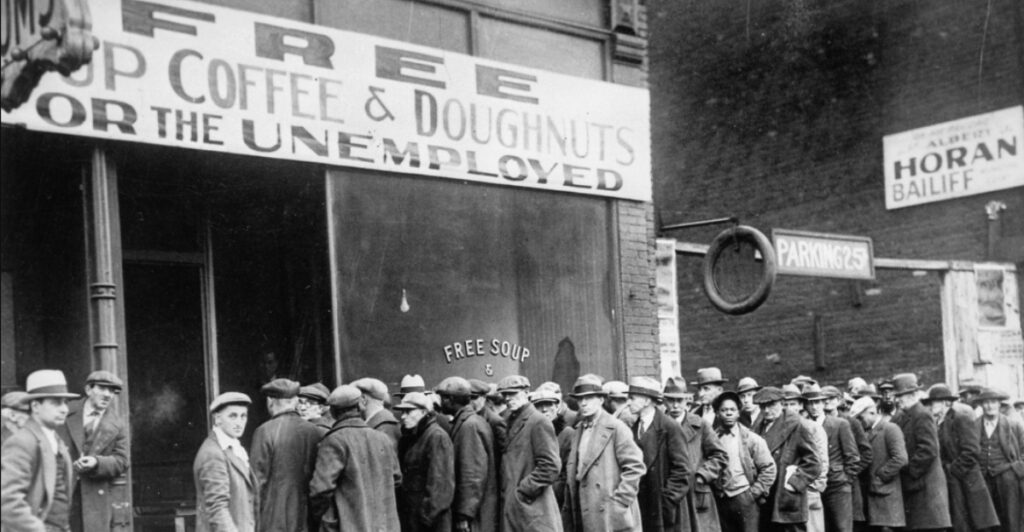
The Smoot-Hawley Tariff Act of 1930 increased the average tariff on approximately 20,000 imported goods by nearly 40%. It aimed to shield U.S. agriculture and manufacturing from foreign competition during an economic decline.
However, the law backfired as trading partners retaliated with their own tariffs. As a result, U.S. imports fell by nearly 50%, while global trade diminished by about 25%.
This tariff war worsened the worldwide economic downturn, destabilized supply chains, raised prices, and reduced consumption, exacerbating the Great Depression’s effects on a number of economies.
Political Forces Behind Smoot-Hawley
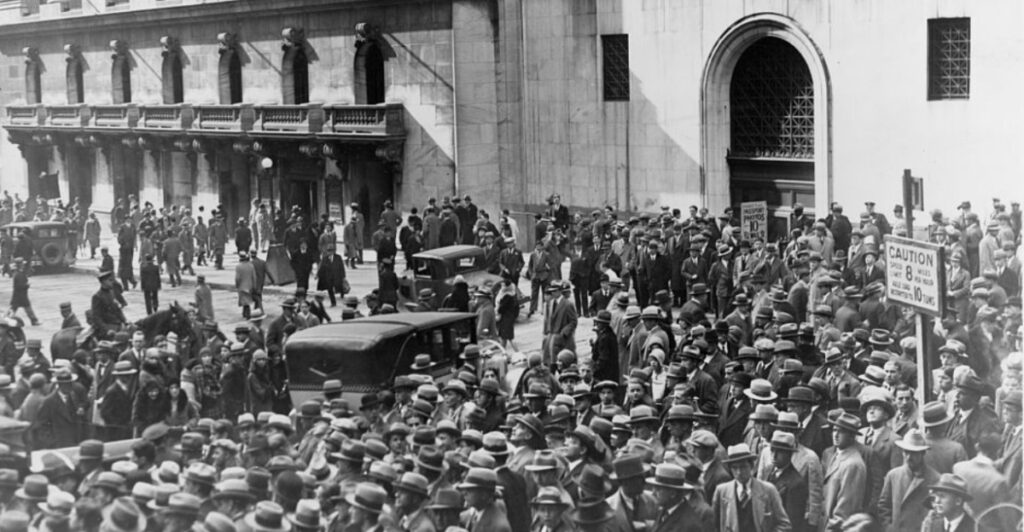
The Smoot-Hawley Tariff Act was a reaction to intense political demand from farmers and industrial interests who wanted protection.
Lawmakers exchanged votes to provide benefits to local constituencies, producing a tariff bill that hundreds of economists predicted would harm the economy. While over 1,000 economists petitioned President Hoover to veto the bill, he signed it anyway.
The political fallout was so severe that Congress later delegated trade policy authority to the president to avoid such fragmented, interest-driven vote trading. This is one example of how political incentives are prioritized over harmful economic policies.
Global Ramifications and the Road to World War II
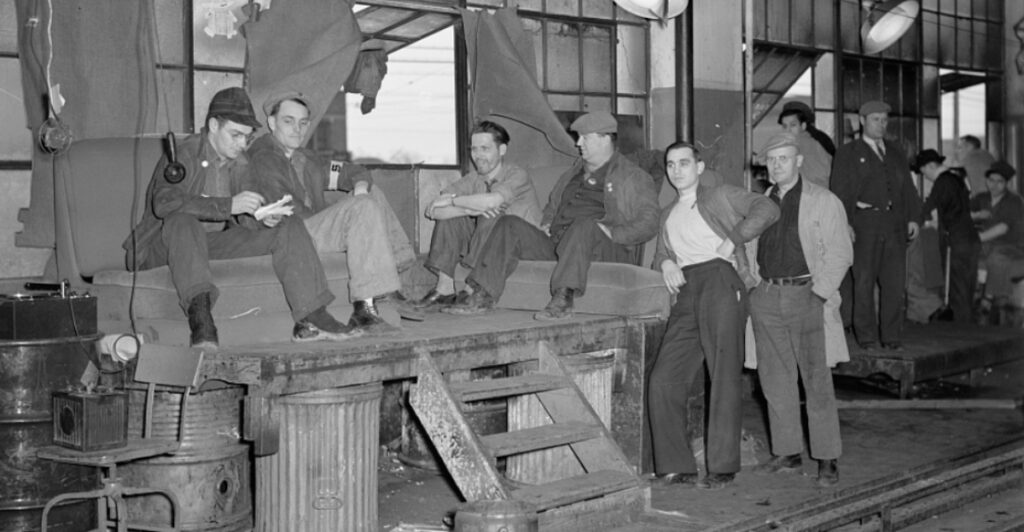
The tariff war deepened the U.S. Depression and destabilized the world economy and diplomatic relations. Protectionism resulted in the collapse of international trade and increased economic nationalism, which created an atmosphere of suspicion and mistrust among nations.
Such stresses contributed to the conditions that fueled the outbreak of World War II. The consequences of isolationist “America First” politics in the 1930s illustrated the long-term geopolitical consequences of economic policy.
Thus, the Smoot-Hawley Tariff Act offers a warning about the dangers of retreating from international cooperation.
Contemporary Tariff Wars: A Blast from the Past

Current U.S. administrations have resumed Smoot-Hawley-style tariff policies, slapping high tariffs on China, Canada, Mexico, and the European Union. These moves have rattled markets, scrambled supply chains, and prompted retaliatory tariffs, crippling major trade relationships.
The scale of tariffs today is unprecedented and has fueled fears of a similar, if not more severe, economic slowdown and inflation increases seen in the 1930s. The interconnectedness of the world economy today makes these tensions especially risky to sustained growth and stability.
Can Tariffs Ever Be Beneficial?
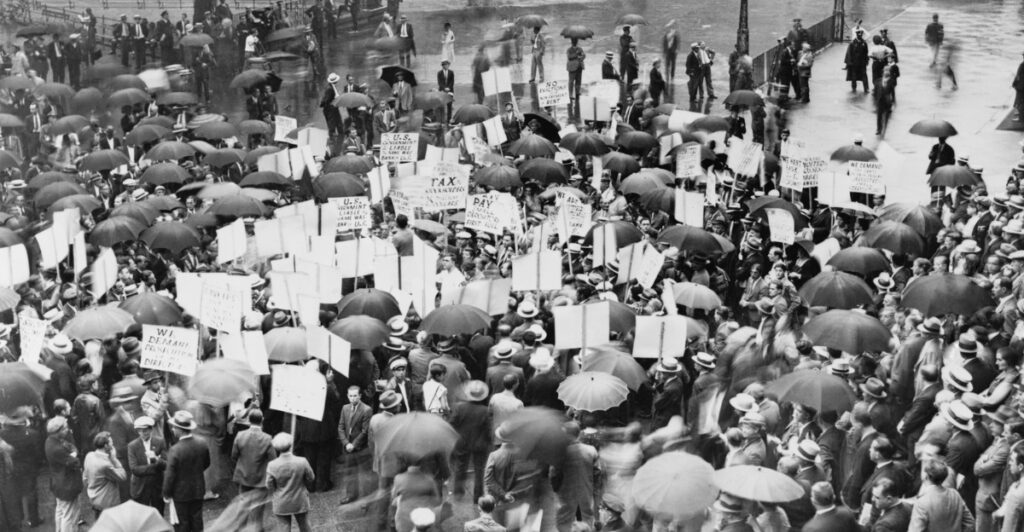
The general consensus is that tariffs harm economic growth by limiting trade, however, some economists argue that strategic tariffs can also protect new industries and preserve jobs in important sectors.
Tariffs, according to them, if well-focused and temporary, could be used to foster domestic innovation and reduce reliance on foreign supply chains. But history warns that any such benefit can be nullified by retaliation and long-term inefficiencies.
This difference in opinion highlights the complexity of trade policy and the difficulty of balancing protectionism with international economic integration.
Tariffs and Tech Industries
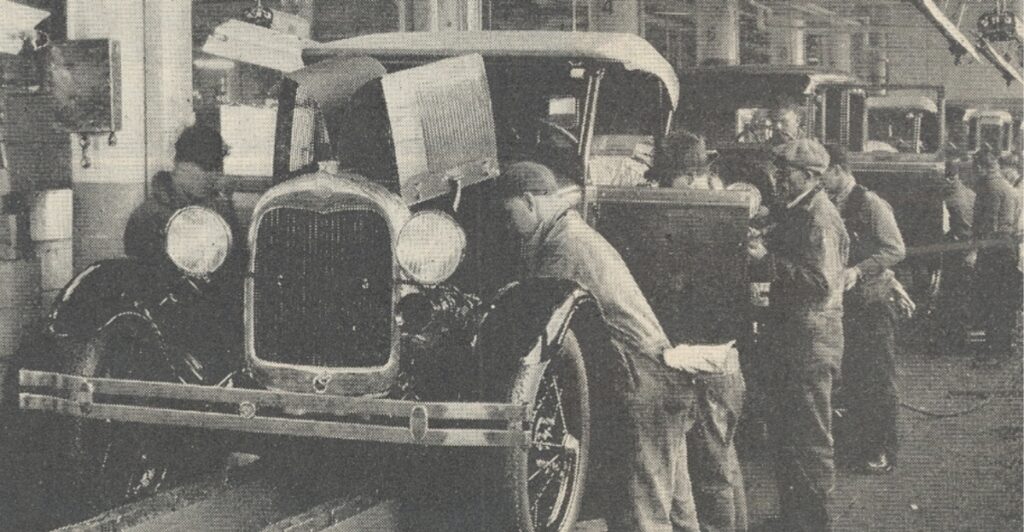
Tariffs today impact high-tech sectors that rely on global supply chains, such as aerospace and electronics. For example, aerospace suppliers have warned of the unforeseeable circumstances that tariff disruptions might have, threatening production and innovation cycles.
Unlike in the 1930s, today’s economy is deeply interconnected by services and technology, making tariff-driven disruptions more complex and pervasive. This intersection of trade policy and high-tech industries might redefine the significance of tariff wars to economic resilience.
Furthermore, the impact extends beyond traditional manufacturing to innovation-intensive sectors critical to future growth.
Globalization vs Tariff Wars

Globalized trade today is far more complex and therefore vulnerable to tariff wars than in the past. This is due to the intricate network of international supply chains that span multiple countries and sectors.
Unlike during the Great Depression, when production was localized, today’s goods involve components, assembly and sales from various countries worldwide. The recent tariff announcements will likely disrupt these complex webs, increasing costs and delays, and putting companies into costly “wait and see” modes.
This abrupt policy changes and resulting retaliations discourages decades-long globalization, stifling efficiency and growth while contributing to global uncertainty.
Lessons from History for Today’s Policymakers

The Smoot-Hawley experience teaches us that protectionist tariffs can snowball into destructive trade wars with unintended consequences. Therefore, policymakers must balance long-term economic stability with short-term political gains.
Open trade and multilateralism have historically been the foundation of growth and peace, while protectionist tariffs and economic isolation have more often led to economic collapse and conflict.
Thus, leaders must balance national interests and international interdependence to avoid repeating the mistakes of the past. History tells us that openness to trade and diplomacy are essential to sustaining prosperity.
Tariff Wars and the Great Depression
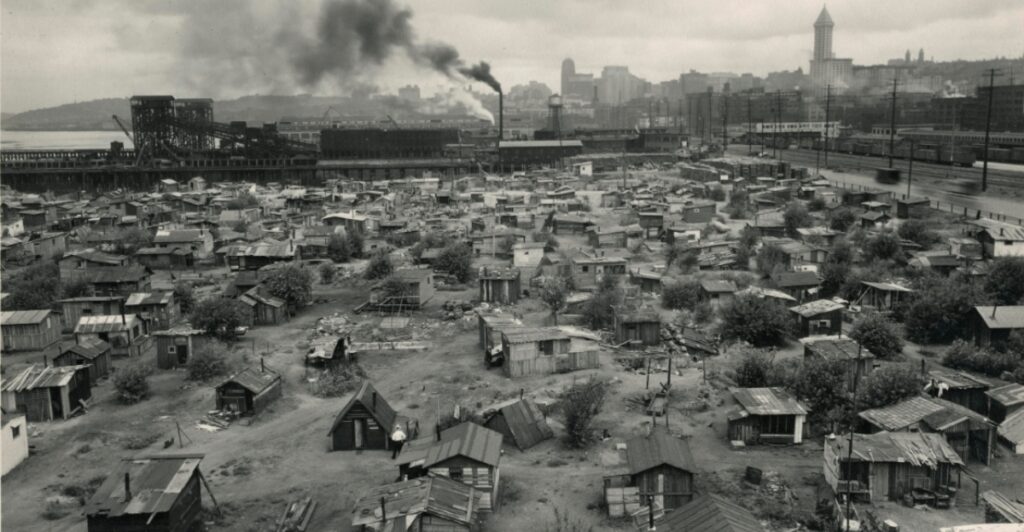
While Smoot-Hawley is often blamed for the Great Depression, it was not the sole perpetrator. The economic slump began in 1929, before the major rise in tariffs. However, the last time a U.S. president launched a tariff war, the economic consequences were catastrophic.
The Smoot-Hawley Tariff Act proved to not only add to the Great Depression; it fueled its global spread, disintegrating international trade networks, amplifying deflationary forces, and propagating economic hardship worldwide.
The recent tariff battles have the capacity to repeat this destructive cycle, with the potential to result in economic decline, job loss, and geopolitical crisis.
Navigating an Uncertain Economic Future
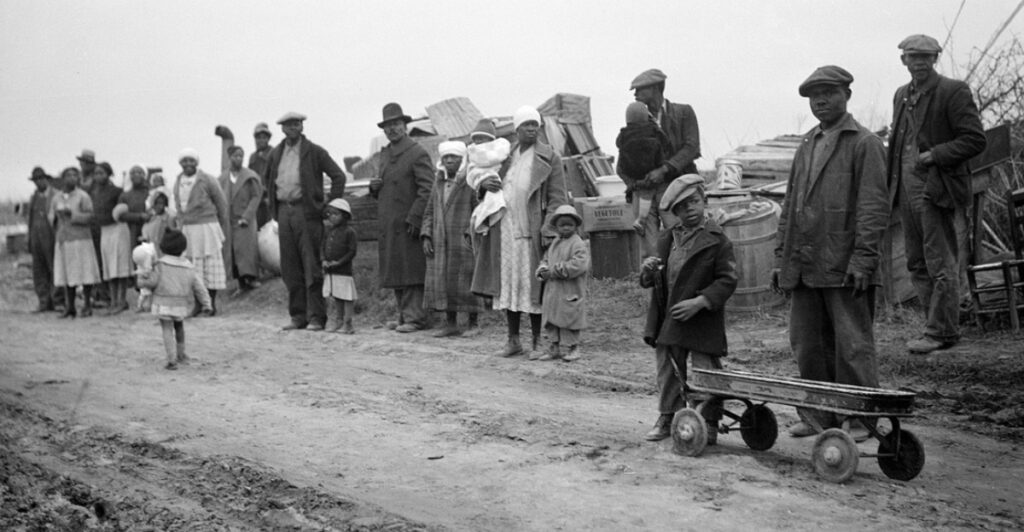
As tariff battles escalate, the global economy risks slower growth, inflation, and damaged trading relationships. As businesses are in free fall, investment slows, and consumers experience higher prices.
But the future is not predetermined. Diplomatic negotiations, trade agreements, and nimble economic policy can mitigate worst-case scenarios.
The Great Depression teaches us that protectionism has the potential to be dangerous but also that recovery is possible through innovation and cooperation. The next few months may very well determine whether we have learned from the past or are destined to repeat it.




